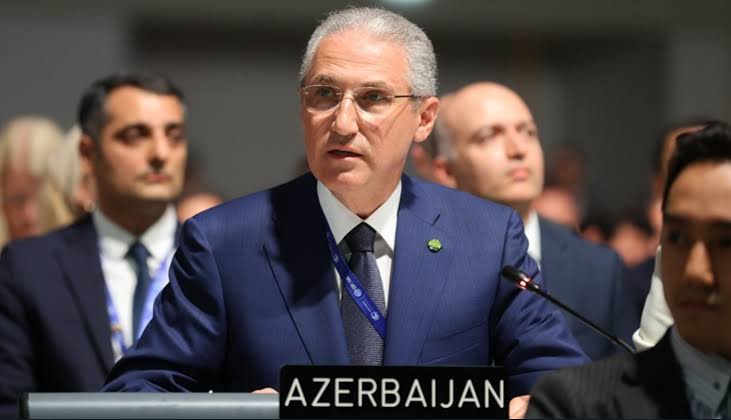The Beginnings Of How Awolowo Educated A Generation

“Every Nigerian citizen must be educated at public expense to the limits of his natural ability, to enable him to be in the finest possible state to produce the utmost he is capable of” Chief Obafemi Awolowo, 1955.
Professor Dayo was born in a small village in the outskirts of Ogun to poor parents. Growing up, there was no hope of going to school for him, as he was expected to follow in the footsteps of his parents who were small scale farmers.
However, in 1955, Dayo’s fortune changed when the premier of the Western Region, Chief Obafemi Awolowo introduced free education to the region. Dayo enrolled and spent years in school without having to worry about fees. Upon graduation, he continued to secondary school and eventually, the University of Ibadan, still as a benefactor of the free education scheme. Today, Dayo is a pensioner after retiring as a professor from the University of Lagos in 2012.
Like Professor Dayo, many in the southwest owe their success to the free education policy of Awolowo which begs the question: who is Chief Obafemi Awolowo and why did he introduce the free education policy?
Chief Obafemi Awolowo is many things to those who admire him and many other things to those who do not. To the Yorubas, however, the sage is responsible for introducing Universal Primary Education (UPE), thereby, improving the lives of people and transforming the fortunes of the old Western Region.
Nigeria transitioned from colonial status to independent status in the 1950s. John Macpherson’s constitution provided a democratic election to the Regional Houses of Assembly, giving each region power to make laws for the peace, order and good governance of the region, concerning certain enumerated subjects, one of which was education.
In 1952, elections into the regional houses of assembly were held, and the Action Group Party, AGP, led by Chief Obafemi Awolowo, won the first election to the Western House of Assembly. Interestingly, in his first budget speech, Awo, as he was fondly called, made his intentions known to the house that free education would be his top priority. He further cited three reasons for free education, which are:
To reduce the inequality in the society, which has been the most potent cause of deep social and political disaffection in Nigeria.
A truly educated citizenry is one of the most formidable deterrents to dictatorship, oligarchy and feudal authority.
An educated individual is the strongest single factor in any nation’s rapid economic and social advancement.
Consequently, Awolowo’s thesis was simple: through education, the Western Region would achieve economic prosperity and meet the social and economic needs of the populace. He believed in the thesis and spent a significant budget on it.
In his words, “As far as possible, expenditure on services which tend to the welfare and health and education of the people should be increased at the expense of any expenditure that does not answer to the same test.”
Implementing The Free Education Program
Awolowo and his Minister of Education, Stephen Awokoya understood the assignment. As such, before launching the programme, the AG government was aware of the problems confronting education in the Western Region. Among these problems were parents’ attitudes toward sending their children (especially their female ones) to school, shortage of workforce in schools, and lack of proper funding. Therefore, to address these fundamental problems, the regional government embarked on some developmental efforts, which included:
Enlightenment campaigns carried out in villages and towns on the importance of education to the people (both young and old)
The establishment of new training institutions and the old ones expanded.
The massive training of teachers.
The school curriculum was equally developed and adapted to the pupil’s needs. Also, new schools were established and some old ones renovated.
These were put in place between 1952 and 1954 in preparation for the scheme. Thus, adequate planning made it easier to implement the programme effectively, and this was based on the principle that no nation can develop optimally if the citizens remain largely illiterate.
The Universal Primary Education was launched in the Western Region on the 17th of January, 1955, and was made compulsory for children between 5-13. It is also worth noting that the Western Region UPE was the largest free primary education scheme in Africa.
Making Sense of The Numbers Behind UPE.
The launching of this scheme was a milestone in the educational history of Nigeria. A remarkable feature of the educational reform of this era was the rapid numerical growth of schools at all levels: primary, secondary (modern and grammar). Teacher training institutions were equally expanded, all to translate the government’s proposal into reality.
Also, the greatest expansion of this period was at the primary school level. The number of primary schools rose from 3,550 in 1952 to 6,670 by the end of 1958. Be that as it may, one of the most significant features of the era was the rapid growth in the school population at all levels. In 1952, when Awokoya presented his historic proposal before the Western House of Assembly, the number of children in school in the region was 381,000. When the scheme was launched in January 1955, 811,432 children turned up, a 430,432 increase!
In terms of budgetary allocation, the time of Awolowo was quite different from the perspective of emphasis given to education. He allocated an average of 35% of the total recurrent budget each year between 1954 and 1959. Education attracted the largest share of the Western Region’s recurrent budget, having varied between 28.9% and 41.2% during the period.
How Awolowo Was Able To Fund UPE
The 1950s ushered in regionalism, with each region controlling its resources. The southeast had coal in abundance, the southwest had cocoa, and the northern region had groundnut and leather as the mainstay of their economies.
Accordingly, revenues from cocoa formed parts of the funds deployed to provide universal primary education. Still, Awolowo understood the unpredictability of cocoa, stating that “I am sure that all Honourable Members will agree with me that the core of our wealth in the region is cocoa. It is the very lifeblood of our economy. Furthermore, it has been realised by all of us for some time now that an economy that depends mainly on a simple export crop is precarious.”
As such, revenue from commodities like cocoa, with its inbuilt price instability, was never going to be adequate. This made the government introduce an Education and Health Levy of ten shillings per male adult taxpayer throughout the region. The tax was levied and enforced. The level of taxation was high, reaching 63% to the GDP ratio, which was certainly higher than just about everywhere else, including the United States of America. It nevertheless brought in the funds needed for an audacious trajectory of social engineering, sustainable development and elevation of living standards unmatched elsewhere.
Awolowo predicted, “when they begin to enjoy the delectable fruits of the education and health levy which they are now being called upon to pay, they will now and in future remember us with gratitude….”
He didn’t lie.
How The UPE Changed The Fortunes of The Southwest
According to Professor Toyin Falola, “no single decision of the decade before independence had been more fateful for the development of the political economy of Nigeria”. The scheme was indeed an epoch-making event, which quantitatively represents a very impressive achievement. With over 50% of children between the ages of six and twelve years as beneficiaries, the region took a big stride towards Universal Primary Education. The phenomenal increase in primary school enrolments throughout the entire duration of the scheme, no doubt, brought positive advantages. Awolowo, (1960), submitted that “At the time of my departure, the number of Nigerians in the higher rung of the civil service in the West (Nigeria) was 1,275 which makes up 75% of the total actual strength of senior officers as against 18% in 1952.”
Among other things, it provided a wider base from which the secondary schools, trade schools and teacher training colleges drew their new entrants. This, in turn, quickened the pace of the development of the middle-level workforce. The institutions of higher education also benefited. So did the labour market and the economy.
Based on the above, it follows that a growing proportion of the population of Western Nigeria was likely to make better materials for modernisation. Thus, the Free Universal Primary Education (FUPE) Western Nigeria, ahead of all the other regions, alludes to the success of Awolowo with the contention that by 1960 In the areas of political sophistication and economic growth, the Western Region towers above other regions in Nigeria.
Also, by independence day, the Western Region had 47.3% of the students at the University College, Ibadan; the Eastern Region had 39.8%, and Northern Nigeria only 8.4%.
An Educational System that Catered to Women
The 1955 UPE program also recognised the gap in male to female enrollment ratio, which was 5:1. This made the Government expand on women’s education by establishing more Domestic Science Centres and providing educational opportunities for women. In Awolowo’s words, “the proper atmosphere for educational, political and economic advancement cannot be created unless women receive an education comparable in standard to men.”
Consequently, the free educational program broke the myth and indifference towards female education. Throughout the era, there was a phenomenal increase in the number of girls being educated in schools; for example, female enrollment went from 115,990 in 1954 to 414,861 in 1959. These figures indicate a more enlightened attitude to the education of women, which was bound to pay off in terms of nation-building in the long run.
In educating more girls, a larger pool of talent was tapped. This is best evinced by Professor Toyin Falola, who analysed that the most powerful agency of change for the modern woman. A large number of elite women have emerged.
Criticisms Against the Policy
There are other sides to a coin. The federal military government, in a bid to introduce UPE throughout the federation, created the 1978 committee whose mission was to evaluate the effect of UPE on the western Nigerian experience. The committee analysed that one of the problems was the financial burden associated with the policy, “the consumption of as much as 369% of the total recurrent budget by one sector of government alone over a continuous period of six years was, of course, an intolerable situation.”
The 1978 report also criticised the dropout rate in UPE schools in the rural areas where their proliferation made the shortfall of qualified teachers so acute: “schools sited in villages of up to 700 population had a wastage rate of 84%. There also existed the problem of primary school leavers joining the employment market directly from curriculums that were not job oriented. As such, the free UPE made them dissatisfied with the rural districts where they were brought up but did not arm them with enough knowledge to leave the rural districts.
However, despite these criticisms, it is interesting to note that by educating a whole generation of people who would not have been able to afford basic education, Awolowo changed the trajectory of the southwest.
NB: Share by Irohinoodua.
The above interesting piece was picked from the social media. We regret that at the source, the name of the author was not included


